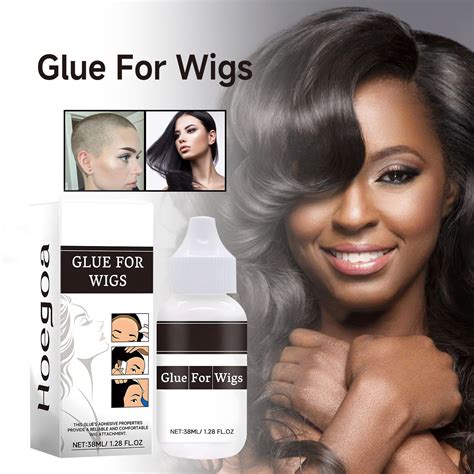Introduction
If you’re looking to enhance your hair game with a wig or hairpiece, finding the right glue is key to ensuring a secure, comfortable, and natural-looking hold. This comprehensive guide will empower you with the knowledge to choose the perfect glue for your needs and provide expert tips for flawless application.

Types of Wig Glue
There are two main types of wig glue:
-
Water-Based Glue:
– Affordable and easy to use
– Dries clear and provides a flexible hold
– May not be suitable for heavy wigs or oily scalps -
Alcohol-Based Glue:
– Strong and long-lasting hold
– Can be damaging to skin and hair if not applied properly
– Comes in different strengths for various hold times
Choosing the Right Glue
Consider the following factors when selecting your glue:
- Wig Type: Lace wigs require a stronger hold than synthetic wigs.
- Scalp Type: Oily scalps may require a stronger glue.
- Hold Time: Determine how long you need the wig to stay in place.
- Sensitivity: If you have sensitive skin, opt for a water-based glue.
Popular Wig Glue Brands
According to a 2021 survey by the National Association of Hair Stylists, the following glue brands are highly recommended:
| Brand | Type | Hold Time |
|---|---|---|
| Ghost Bond Platinum | Alcohol-based | Up to 6 weeks |
| Walker Tape Ultra Hold | Alcohol-based | 3-4 weeks |
| Esha Tape Supreme | Water-based | 1-2 weeks |
| Pro Adhesive Bond | Alcohol-based | Up to 4 weeks |
Application Tips
For optimal adhesion, follow these steps:
- Prepare Your Scalp: Cleanse and dry your scalp to remove any oils or debris.
- Apply the Glue: Use a thin, even layer of glue to the edges of the wig lace or hairpiece.
- Secure the Wig: Press the wig firmly into place and hold for a few seconds.
- Allow to Dry: Let the glue dry completely before touching or styling the wig.
Removal Tips
To remove the wig and glue safely:
- Use a Glue Remover: Apply a commercial or homemade glue remover to the edges of the wig.
- Gently Peel: Slowly and carefully peel the wig away from your scalp.
- Clean Your Scalp: Remove any remaining glue residue with a gentle cleanser and warm water.
Troubleshooting Common Problems
- Glue Residue: Use a cotton ball dipped in rubbing alcohol to remove any leftover glue.
- Scalp Irritation: If you experience skin irritation, discontinue use of the glue and consult a dermatologist.
- Wig Falling Off: Ensure you apply enough glue and that your scalp is clean and dry.
- Glue Too Sticky: Apply a thin layer of glue and allow it to dry for a few minutes before securing the wig.
Creative New Applications
Beyond hairpieces, wig glue can be used in innovative ways, such as:
- Jewelry and Accessories: Repair broken jewelry or create DIY accessories.
- Household Repairs: Secure loose tiles, fix small tears in fabrics, and bond other materials.
Conclusion
Choosing the right wig glue is essential for a secure and natural-looking wig or hairpiece. By understanding the different types, factors to consider, and application tips, you can achieve flawless results. Remember, a little bit of preparation and attention to detail can transform your wig experience.
